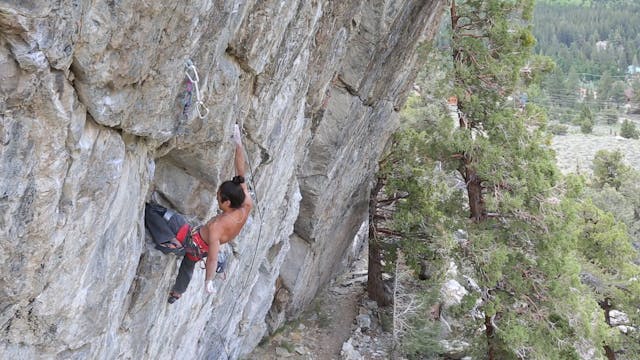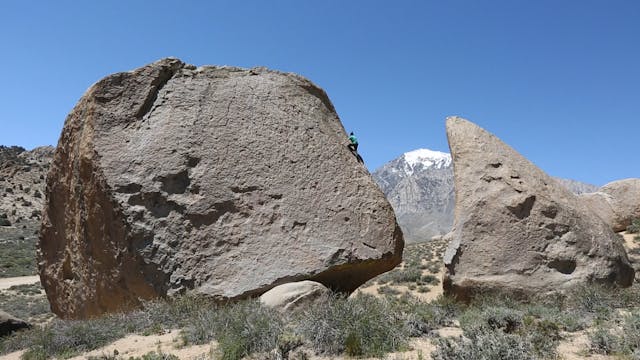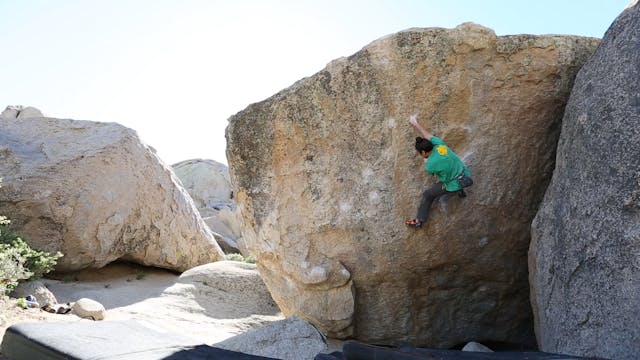Climbing Movement: 17. The DeadPoint
Climbing Movement
•
1m 29s
“Deadpointing” is a term used to describe an advanced, climbing movement technique. That stated it is a fun move to execute, easy to learn, and can help you bump up to the next grade of climbing.
Imagine you are fairly extended, and about to do a hard move. Gravity is pulling at you, and trying to rip you off the wall. If you let go, you will probably fall. Instead of accepting this fate, the climber must complete an advanced move called the “deadpoint”.
Imagine tossing an apple up in the air, and then catching it. That brief moment at the top of the arc, before the apple falls back down, is considered the deadpoint. This is the movement one tries to incorporate when deadpointing.
Often from an insecure position, the climber creates movement with their hips inwards, towards the wall. This creates a short period of time in which the body is still or moving into to the wall, instead of falling away from the wall. In this brief moment, the climber reaches up and confidently takes the next hold. Knowing this is a one-time move (or must-do situation), the climber makes sures to not let go of the newly found hand-hold.
To deadpoint correctly, try to start the movement with the hips, and not the arms. Also try to spring the legs for upwards momentum. Typically, your feet will remain on the original footholds, as your hand extends up towards the target. Deadpointing is a very controlled climbing move. Save the more dynamic moves, with your feet kicking free of the wall, for more advanced “dynos”. Deadpoint climbing moves can also be used with the movement known as “pogo-ing” or “moon kicking”.
We hope you found this video helpful. Feel free to comment below with questions or thoughts!
Please remember, climbing is inherently dangerous. Climb at your own risk.
Up Next in Climbing Movement
-
Climbing Movement: 18. Resting While ...
Here we review the opposite of movement. Specifically, resting!
The importance of resting while climbing cannot be stressed enough. Whether you are working on a tall bouldering project or a long route, if at first you don’t succeed, consider taking a rest.
Resting on route or between attem...
-
Climbing Movement: 19. Staying Calm &...
A calm and focused climber often succeeds in topping out on routes, despite personal fatigue or route intensity. Below are a few tips for staying calm and focused:
1. Breathing is one of the most important elements to remaining calm and focused while climbing. Maintaining composure through bre...
-
Climbing Movement: 20. The Importance...
“Leaning” technique uses bodyweight to maximize the effectiveness of a hold, while preserving energy on the route.
1. As you approach a hold, consider the climbing hold’s direction of pull.
2. When first engaging with the climbing hold, keep in mind the ways you might oppose, or lean again...


